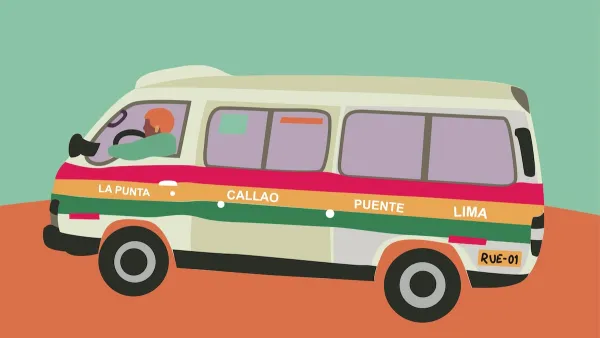This article from the Harvard Design Magazine looks at slums in Latin America and discusses the important role they play in their cities. Preserving the positive qualities of these communities is increasingly preferred over slum clearance.
"United Nations estimates suggest that nearly one billion people now live in slums worldwide- one-sixth of the planet's population. Without concerted action, the number is expected to double by 2030. Categorical terms like slum, however, can disguise significant cultural and economic distinctions among low-income settlements. Variously known as informal or non-formal cities, squatter settlements, or shantytowns, these communities differ dramatically in size, character, age, and level of political and social organization; they are found in both rural and urban areas, although they are increasingly associated with the world's largest cities, especially in Latin America, Africa, and Asia. Informal urban settlements appear in city centers and on their peripheries; they result both from traditional squatting and from a kind of 'pirate urbanism': they don't conform to zoning or service regulations and are enabled by bribes, populist governments, or property speculators who hope for eventual regularization and compensation for their investment. Notwithstanding their variations, however, these places share some characteristics: inadequate housing, insufficient living space, insecure land tenure, and lack of access to basic services, especially clean water and sanitation."
"In recent years, prevailing strategies for addressing non-formal settlements have shifted away from large-scale slum clearance and relocation, which have been demonstrated to cause massive social disruptions. The approach favored today is on-site upgrading and improvement, with the goal of integrating low-income communities into their larger urban contexts. There may be something inevitable about this: there are so many informal settlements around the world and many of them are so big and so old that it is becoming impractical to think of removing them entirely, especially since sufficient vacant land is scarce. Improving informal settlements, though more cumbersome and arguably more expensive than building right in the first place, has the advantage of leaving intact the economic and social networks that residents have created for themselves. As yet, however, there is no clear set of best practices for these upgrades, which range from small 'acupunctural' insertions to expansive infrastructural improvements, from familiar government-led programs to designer-initiated projects."
Thanks to Josh Stephens
FULL STORY: Improving Informal Settlements

Analysis: Cybertruck Fatality Rate Far Exceeds That of Ford Pinto
The Tesla Cybertruck was recalled seven times last year.

National Parks Layoffs Will Cause Communities to Lose Billions
Thousands of essential park workers were laid off this week, just before the busy spring break season.

Retro-silient?: America’s First “Eco-burb,” The Woodlands Turns 50
A master-planned community north of Houston offers lessons on green infrastructure and resilient design, but falls short of its founder’s lofty affordability and walkability goals.

Test News Post 1
This is a summary

Analysis: Cybertruck Fatality Rate Far Exceeds That of Ford Pinto
The Tesla Cybertruck was recalled seven times last year.

Test News Headline 46
Test for the image on the front page.
Urban Design for Planners 1: Software Tools
This six-course series explores essential urban design concepts using open source software and equips planners with the tools they need to participate fully in the urban design process.
Planning for Universal Design
Learn the tools for implementing Universal Design in planning regulations.
EMC Planning Group, Inc.
Planetizen
Planetizen
Mpact (formerly Rail~Volution)
Great Falls Development Authority, Inc.
HUDs Office of Policy Development and Research
NYU Wagner Graduate School of Public Service



























